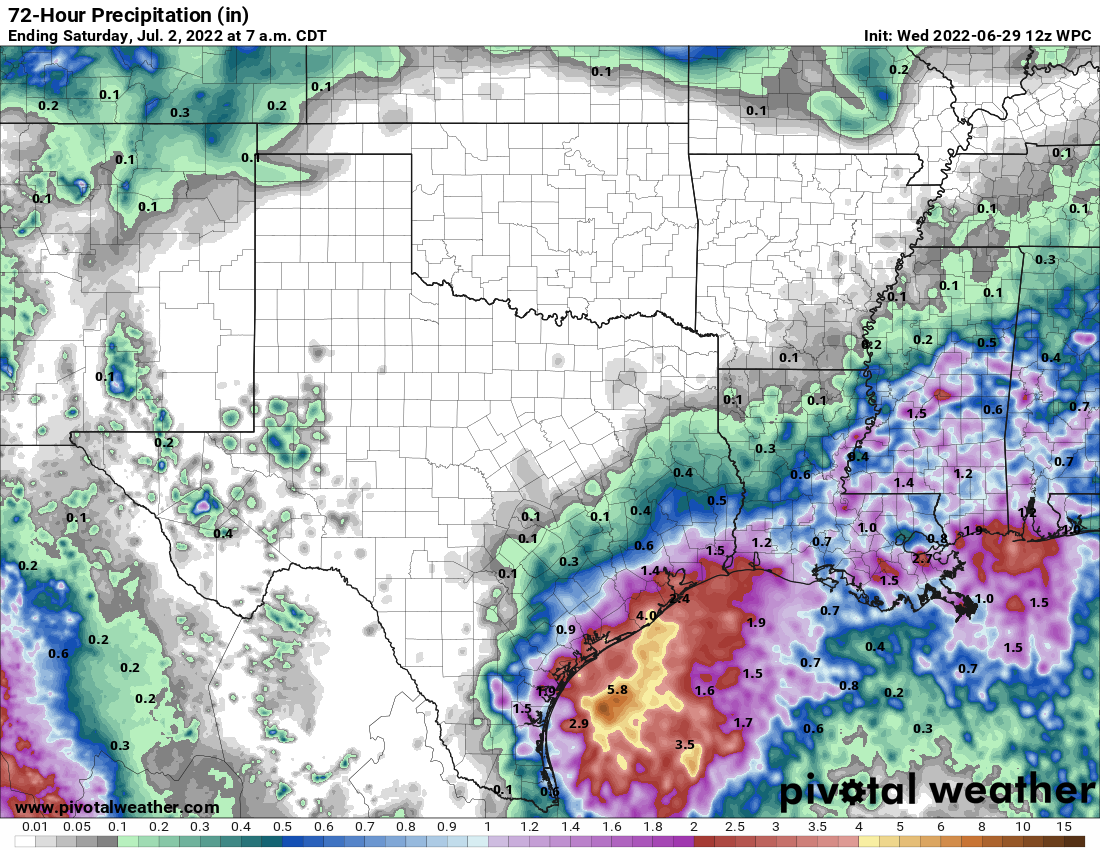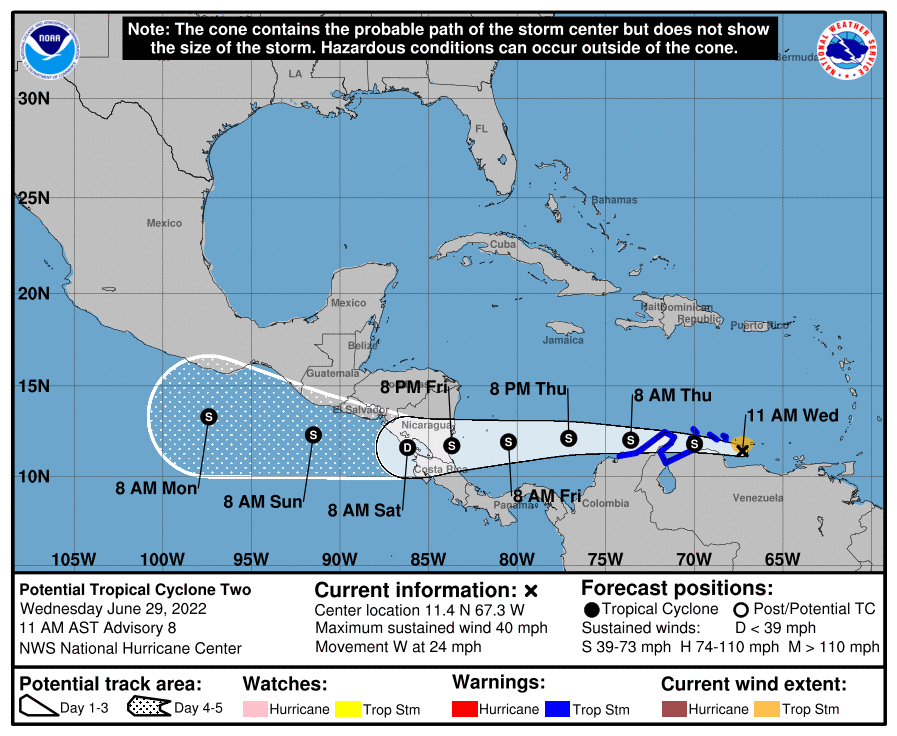The Pattern is Full: WeatherTiger's Weekly Column for June 29th
Three disturbances to monitor in the Atlantic today, but no major U.S. threats.
If you are not already a supporter, please consider signing up for a paid subscription. You’ll get Florida-focused daily tropical briefings each weekday, plus weekly columns like this one, full coverage of every U.S. hurricane threat, our exclusive real-time seasonal forecast, and the ability to comment and ask questions, all for just $7.99.
The recent runaway success of Top Gun 2: A Previously Unknown, Yet Higher Gun demonstrates that a common belief in Pete “Maverick” Mitchell is one of the few remaining sinews binding all Americans together, along with love of sandwiches and the absolute certainty that those who disagree with us are wrong. In honor of the year’s loudest and fastest three-day weekend ahead, the Tropics are respecting this shared conviction for living on the edge with three disturbances pushing the boundaries of hurricane climatology for late June.
Fortunately, all requests for a flyby of the U.S. coastline from organized storms have, as yet, been denied. Let’s tackle these three systems in reverse order of development odds, as the system with the best chance of becoming a tropical storm in the next few days is no threat to Florida.
Of the three, the only outside shot of impacting Florida’s weather down the road is a tropical wave a little less than 1,000 miles east of the Lesser Antilles. This wave is generating only modest convection, though it could start to produce more showers and storms as it pushes through the central Lesser Antilles over the weekend, in the direction of Hispaniola.

As this wave moves west-northwest across the northern Caribbean, wind shear will increase, which along with land interaction means development is unlikely (though not impossible) over the next five days. The wave axis may be near Florida or the eastern Gulf by the middle of next week, which would increase rain chances for the state at that time. We’ll see if the wave manages to find a little more conducive environment at that point, but there’s no cause for concern right now.
Also of interest for the Gulf Coast is Invest 95L, a clutch of storms off the Texas coast. Convection is a little more concentrated today around a weak surface circulation east of Brownsville, and there is some chance that a tropical depression forms before the system drifts inland near Corpus Christi on Thursday. A marginal environment and loose structure should preclude significant non-rainfall impacts, though 1-3” rain totals are possible in coastal Texas into the weekend as 95L slides north.
Finally, Potential Tropical Cyclone Two continues to pursue a challenging and unusual track across the far southern Caribbean, which so far has prevented it from becoming a tropical storm. As of Wednesday afternoon, PTC 2 continues to buzz South America at low latitude, and will keep grinding west along the Venezuelan and Colombian coasts through mid-day Thursday, bringing heavy rainfall and sustained winds of around 40 mph.
While PTC 2 is generating plenty of deep convection, its excessive, self-destructive need for speed is preventing it from being promoted. The system is racing westward at 30 mph (Mach 0.04), which means that while PTC 2 has winds from the north, south, east, and west relative to its own circulation, it is not producing the necessary west winds relative to the ground to be classified as a real-deal tropical cyclone. Steering currents should slow down by Friday and allow PTC 2 to become at least a tropical storm prior to reaching Nicaragua early in the weekend. The next two names up for grabs are Bonnie and Colin. There will be no impacts of any kind on U.S. weather from PTC 2, which will continue westward across Central America into the Eastern Pacific next week.
While none of these systems are particularly threatening to the U.S., tracking three disturbances simultaneously in June is way out of line. If both PTC 2 and 95L were to become Bonnie and Colin by the end of Thursday, 2022 would be just the third June since 1950 to produce three named storms. However, unlike a sweaty game of volleyball in jeans, this is not suggestive of anything. June and July tropical activity does not predict how busy the August-October peak months of the hurricane season are: the correlation is literally zero. I’ll take an updated look at our seasonal modeling output in this space next week.

And so, whatever your core beliefs (e.g., Iceman bears sole responsibility for the death of Goose), enjoy an Independence Day weekend mostly free of tropical danger zones for the good ol’ U.S. and A. Keep watching the skies.







